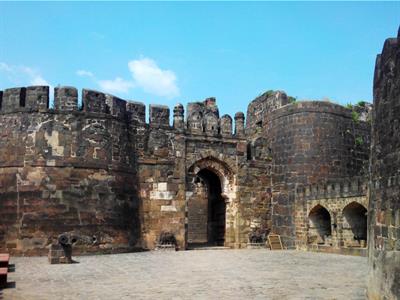
PUMPA - SMART LEARNING
எங்கள் ஆசிரியர்களுடன் 1-ஆன்-1 ஆலோசனை நேரத்தைப் பெறுங்கள். டாப்பர் ஆவதற்கு நாங்கள் பயிற்சி அளிப்போம்
Book Free DemoGhiyassudin Tughlaq: (1316 - 1325)
The Tughlaq dynasty was established under Ghiyassudin Tughlaq, whose ultimate concern was to recover the areas he had lost during his feud with Alauddin khalji. He later sent his son Jauna khan to conquer Warangal, where he defeated Prabutabutra and plundered Warangal.
Tughlaq Nama: The book written by Amir Khusrau, deals with the ascendance of Ghiyasuddin tughlaq.
Ghiyassudin was the first Sultan to begin Irrigation. He later laid the foundation stone for Tughlaqabad adjacent to Delhi, with the booty acquired from Warangal. Like the repeating pages of history, Jauna khan killed his father and ascended the throne in \(1325\).
Jauna khan: Known to be the son of Ghiyassudin tughlaq, killed him to acquire the throne under the titular name of Mohammad-bin-tughlaq.
Mohammad-bin-tughlaq: (1325 - 1351)
Muhammad-bin-tughlaq is a complexion of learned knowledge and touch of cruel thoughts. Thus his period witnessed the beginning of the disintegration of the dynasty.
Unlike his predecessors, he wanted the entire subcontinent under his control. He shifted his capital from Delhi to Devagiri to facilitate the extension of sovereignty.
Later renamed Devagiri as Daulatabad. After some time, realising his mistake, he returned to Delhi and made it his capital. He returned to Delhi due to the lack of water supply in Deccan. During his return, the city wore a deserted look with minimum population.
Khorasan Project: Mohammad began to strengthen his empire to withstand the adversary of Chinese invaders, so he launched the Khorasan Project in Kumaon Hills.

Daulatabad Fort
He embraced foreign travellers, and one such notable presence was Ibn Batuta, a Moroccan traveller who visited India during his reign. He accompanied him to Delhi while returning from Daulatabad.
Ibn Batuta: A Moroccan traveller who visited India to make an account of the happenings during Muhammad- bin-tughlaq’s period. He was then sent to China as an envoy of the Sultan.
Reforms and failures of Mohammad-bin-tughlaq:
Diwani-i-Amirkohi: A separate department established by the Sultan to extend loans for agriculture purposes.
- Mohammad-bin-tughlaq changed the prevailing method of revenue collection by grains to the collection of revenue in terms of money.
- Inadequacy of coins led him to mint token currencies, which led to counterfeiting of currencies and the revenue system crumbled.
- The trade system collapsed due to the counterfeiting of currency made the king pay in gold and silver, which led to the bankruptcy of the state.
- The increase of land tax in the doab region led to agrarian revolts. The king dealt with iron-fist that later forced the peasants to abandon cultivation, leading to devastating famines..
- His reign witnessed numerous revolts and resistance through that many of his provinces declared themselves independent Awadh, Sind, Multan and Madurai, to name a few.
- A new sultanate named Bahmani emerged in the south of Tughlaq's empire, controlling the southern territories. Mohammad-bin-Tughlaq later died in \(1351\).